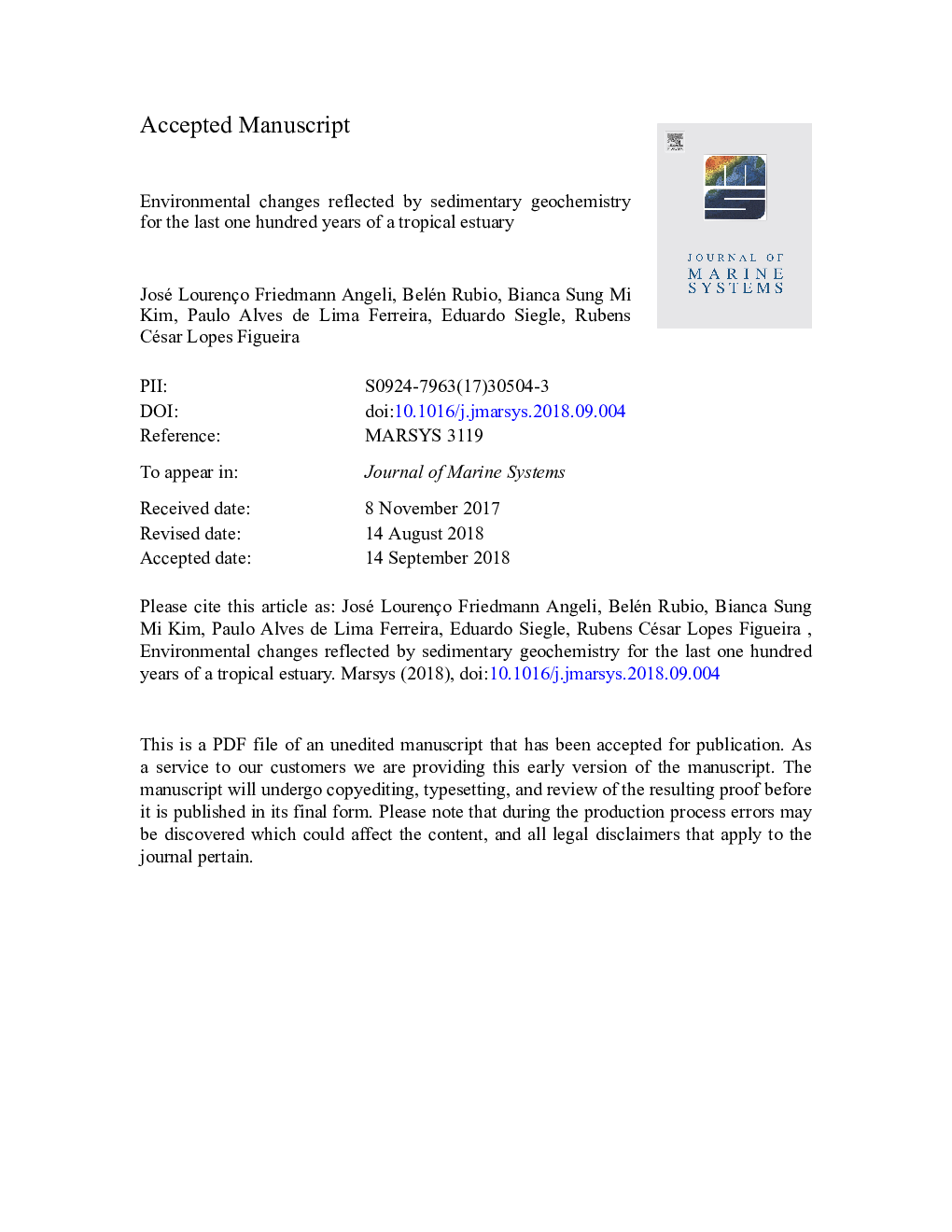| Article ID | Journal | Published Year | Pages | File Type |
|---|---|---|---|---|
| 10223866 | Journal of Marine Systems | 2019 | 52 Pages |
Abstract
Based on multiple proxies, such as major and trace elements, mineralogy, Corg/Ntotal ratio and δ13C, we assessed the natural and anthropogenic depositional record in a tropical estuary (Caravelas, Brazil). The Caravelas estuary was once a pristine area of highly important ecological role, due to its mangroves and proximity to the largest reef system in the South Atlantic (Abrolhos Archipelago). However, during the past decades, the estuary has been subjected to both natural and anthropogenic impacts, such as a natural opening of an inlet and changes in land use. This study is based on three dated cores, taken from the inlet to the main channel. A shift in the organic and inorganic proxies, in the early 1960s, shows the impact of this natural opening on the hydrodynamics and sediment distribution. Furthermore, there is a clear spatial pattern in the contribution of the main sources to the organic matter content in the cores: the core collected further away from the inlet shows a strong C3 plant contribution while the ones recovered closer show a higher marine influence. Only a slight increase in enrichment factors of the selected trace metals has been observed and they have been attributed to land use changes rather than direct inputs from industrial and urban sources. Such information is vital for the effective management of coastal systems, mainly when considering natural and ongoing anthropogenic changes in its forcing conditions that are exacerbated by climate change.
Related Topics
Physical Sciences and Engineering
Earth and Planetary Sciences
Oceanography
Authors
José Lourenço Friedmann Angeli, Belén Rubio, Bianca Sung Mi Kim, Paulo Alves de Lima Ferreira, Eduardo Siegle, Rubens César Lopes Figueira,
